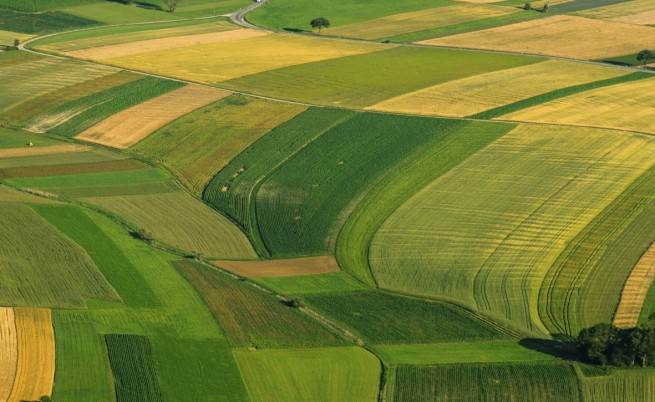COOKIES ON THE YOKOHAMA ATG SITE
We use cookies on this site to enhance your user experience. By clicking any link on this page, you are giving your consent for Yokohama ATG to set cookies.
June 18, 2020 << Back to Blog

June 18, 2020
Soil is a limited and irreproducible resource. It is the fundamental basis for the plant growth both in agriculture and forestry – and is thus of utmost importance for the production of oxygen, food, feed and fibre. Various impacts threaten soils and their lasting fertility. (tramadol) These impacts include effects of deforestation, erosion, salinization, compaction from heavy agricultural machinery – and of course the loss of land to infrastructure as well as industrial, commercial and residential areas. Let’s take a closer look at “the soil” and hazardous impacts in a first step.
5.0 billion hectares of agricultural land account for roughly 36 per cent of the world’s total land surface – a rather large area at first glance. Given, however, that already more than 7.779 billion people live on this planet, 5.0 billion hectares of agricultural land do not sound so much any longer. And: The major part of this agricultural land is pasture. Only about 1.5 billion hectares remain as arable land. If divided per capita of the world population, this currently leaves less than 0.2 hectares – or 2,000 square metres of arable land – for growing crops as food for each and every human. As the world population continues to grow, and will reach an estimated 9.8 billion in 2050, this will then leave less than 1,500 square metres per person. This figure impressively highlights the preciousness of “the soil”.
Soil – is the organic habitat for various organisms making it so fertile and rich. Estimates assume that there are more soil organisms under a single human footprint than humans on earth. Soil life includes many different organisms such as bacteria, fungi, protozoa, microarthopods, earthworms or millipedes, for example. A teaspoon of grassland soils is said to contain more than one billion organisms of up to 10,000 different species. This abundance makes soils a highly diverse and fascinating “universe of its own”.

Already in the times of ancient Greeks and Romans, deforestation has proven to be one of the key hazards for soils. Equally, agricultural practices such as excessive tillage can leave the soil unprotected and cause massive damage due to erosion by wind or water. Salinization, another major threat, can occur as a natural process in dry areas due to irregular rainfall and high evapotranspiration rates but also due to excessive irrigation and unbalanced fertilisation. Soils affected by these processes may completely lose their suitability for cropping. This blog will focus on soil compaction, which is caused by agricultural and forestry machinery often operated on wrong tires or inflation pressure. According to the European Commission, a third of European subsoils are estimated to be very vulnerable to compaction. The extend of the damage partly depends on soil texture, with sand being least and clay being most susceptible to compaction.
In a healthy and uncompacted soil, and thanks to microbial activity and structures such as fungal mycelium, soil particles and organic matter bind into generally stable units forming so-called soil aggregates and soil structure. A typical silt loam, for example, is characterised by 50% pore space. The pores are filled with air and water 50/50 (See Figure 1). Such porosity ensures the infiltration and storage of soil water for crop growth as well as the exchange of soil air, thus avoiding detrimental anaerobic conditions.
When the pressure that is caused by heavy machines, for example, exceeds the ‘strength’ of the soil, this will lead to compaction, i.e. higher soil density and reduced pore space for water and air. Pores in the soil become disconnected, thus impeding the movement and exchange of gas and water. This physical degradation leads to reduced availability of water and oxygen, to reduced biological activity, and to lower availability of plant nutrients. There is a growing risk of erosion as more rain water will run off on the surface instead of infiltrating the soil. In addition, plant roots cannot reach down far enough to ensure sufficient access to soil water and nutrients. (Lambertsfruit.com) Altogether this leads to the lower yields and thus lower economic efficiency of the agricultural business.
Without doubt, ever growing sizes and weights of modern agricultural equipment also means a growing risk of compaction. Resulting damage cannot only be found in the soil but also in yield levels. Various studies give clear evidence of massive cuts in yield. Minus 24% in corn, minus 39% in sorghum (American study), minus 50% in wheat (British experiment), up to minus 70% in corn in a Canadian study, or 38% lower silage corn output in a Dutch study.

However, the enormous efficiency gains achieved by larger, more powerful machines, increased working-widths and vehicles such as high-volume trailers do not necessarily mean that compaction is inevitable … The right tires can save the situation! We will take a look at the role that tires can play in protecting the soil in our next blog.
01-Dec-2023
30-Oct-2023
16-Oct-2023
10-Oct-2023
04-Oct-2023
01-Sep-2023